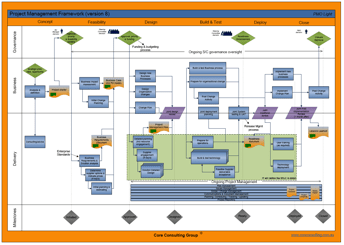Can we automate project governance?
Is it really possible to automate governance when implementing a project portfolio management (PPM) system? It’s an interesting question, and one to which tool vendors would no doubt say ‘yes, use workflow’. Automation would imply the decision is either 100% predictable based on business rules or requires individual sign off.
Automation is ideal to get the expense claim or leave request approved, but can it be used for more complex decisions? Governance is very much about the ‘should we’ decisions: these are not simple decisions, they involve people, strategy and numerous intangibles.
Governance is, according to Wikipedia, “the management framework within which project decisions are made”. Further, according to the UK’s Office of Government Commerce, governance is “the control framework through which programs deliver their change objectives and remain within corporate visibility and control”.

A ‘typical’ governance framework will include decision gates at set points in the project lifecycle where decision makers approve projects to proceed. Some decisions are made by individuals, others by committee. These decisions would require standard, repeatable artefacts as inputs into the decision making, for example business case. Tools certainly have a place there, capturing information online and making that information available for decision makers as well as future performance measurement.
But should the actual decision be automated? We would argue no. While content can be electronically captured, governance documentation usually relates to an investment. The investors, such as the business, will often ask questions, gain clarifications, debate and compare before making their decision. These are all human aspects of decision making which involve experience, instinct, discussion and collaboration, not at all suited to the isolated email/workflow-driven ‘tick a box’ nature of automation.
Also, the business needs to make a decision as to the relative priority of the initiative, assuming it goes ahead. Priorities will always inspire debate and discussion.
So back to the tool. Yes, by all means capture online the decisions and artefacts. Perhaps even provide automation of the QA check prior to decision makers receiving artefacts. But the tools really need to wait for, and log, the decisions made in steering committee meetings and that aspect cannot be automated. Tools can then focus on providing visibility, reporting and collaboration to support ongoing governance. That’s what tools are good at.
So when you are implementing a PPM tool and are asked about workflow requirements, keep it simple. By all means log the request information and create a hold point for approval, with the simple model of the PMO manager having the approval rights. Ensure all stakeholders realise that the PMO manager doesn’t actually make the governance decision, they are simply passing on to the tool the decision made by others.

